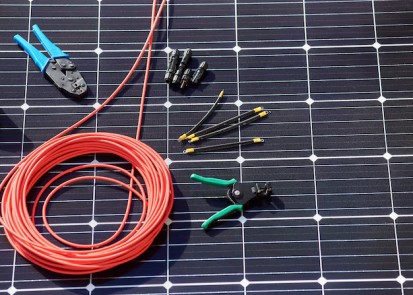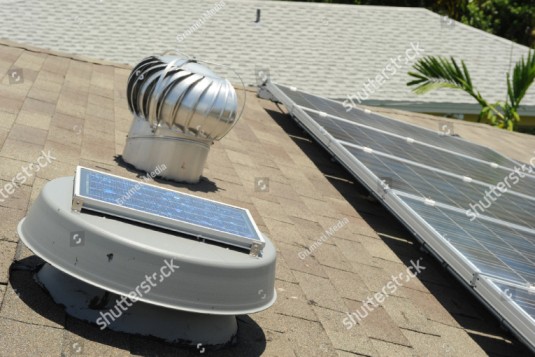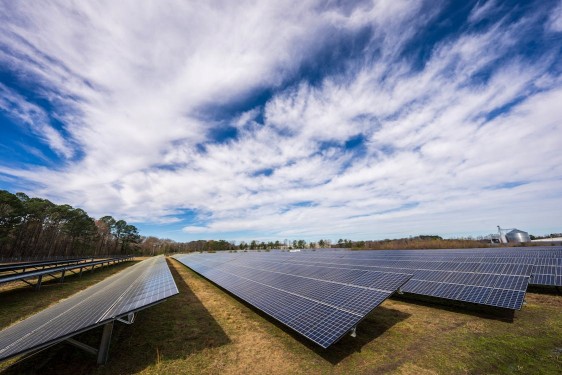Solar Panel Components and Functions
While they may look like a simple piece of tech, solar panels are composed of several moving parts, each with their own set of corresponding functions. Some such parts include solar cell, solar glass, EVA Sheets, Backsheet, Junction Box, Inverter, Frames and Connectors – just to name a few. This blog takes a comprehensive look at the different parts of a solar panel and their corresponding functions so that you have a sound knowledge of what’s under the hood of a solar panel – the clear frontrunner driving the green energy revolution.
The evolution of solar panels in their present form in terms of design and accessibility has gone a long way in turbocharging the solar revolution. A steep decline in energy production costs and steady maturation of associated sub-sectors have resulted in the rapid adoption of solar power as a cost-effective, sustainable source of green energy for the masses. So, fasten up your seatbelts for a leaning experience that will leave you a brighter (pun intended) by the end of this blog.
Solar Panels Parts and Functions
While it may look like a simple slab of shiny tile, a solar panel actually has a number of components that serve various functions. Most important parts of a solar panel include a solar cell, protecting glass, an Aluminum frame, an EVA sheet, a Backsheet, a Junction Box, a Solar Inverter, and Connectors. Each of the parts and their function is well discussed in the listed format below.
1. Solar Cell - The Heart of A Solar Panel
The solar cells form the heart of the solar panel. Owing to the photovoltaic effect of solar cells, they are also known as photovoltaic cells. These cells are responsible for the conversion of light energy to direct current electrical energy. A solar cell is a kind of P-N junction diode.
Parts of A Solar cell
- Top layer: The top layer of the solar cell is covered with glass. This glass is covered with a metallic finger or strip that acts like an electrode.
- N-type material: Beneath the glass lies a thin layer of N-type material. The N-type material is a semiconductor material. Usually, Silicon is heavily doped with phosphorus. The free electrons present in this layer are responsible for the negatively charged N-type material. Hence, referred to as N-type material.
- P-type materials: A thick layer of p-type material is present below the N-type material. This p-type material is also a semiconductor material. The P-type material also has Silicon but is lightly doped with Boron. This layer has “holes”, imparting a positive charge to the layer.
- Substrate base: The lower portion of P-type material is attached to a substrate base. This substrate base is typically a conducting material. The metallic sheet of stainless steel or Aluminum is traditionally used.
How do solar cells work?
- N-type material:
Free electrons are present in the entire region of the layer of N-type material. These free electrons present are responsible for its negative charge.
- P-type material:
The entire region in the layer of P-type material has holes produced due to the jumping away of electrons. Thus, making it positively charged material.
- Depletion region:
At the junction of N-type material and P-type material, a neutrally charged region, named depletion region is established.
This happens when the free electrons in the vicinity of the P-type material occupy the holes at the junction. Meanwhile, the occupation of holes in P-type material generates “holes” in N-type material at the junction. Thus, producing a neutrally charged depletion region.
- Emission of Electrons:
When the solar cell is exposed to sunlight, the solar energy in the form of photons is incident on the N-type layer. The photons need to cross this layer to reach the depletion region. Therefore, the thin layer of the N-type region increases the efficiency of photon transfer.
On reaching the depletion region, photons cause the emission of electrons from the atoms of semiconducting material. As these electrons are free to move, they move toward the positive charge carrier. Whereas the holes being positively charged, move toward the negative charge carrier.
- Direct Current generation:
The metallic finger/ strip on the glass and the metallic substrate behave like an electrode. Electrodes, when connected by a conducting wire complete the circuit. This circuit allows the free electrons to flow through the wire, hence generating a Direct Current (DC).
2. Glass
The heart of the solar panel needs to be protected from severe weather conditions. T Once installed, these solar panels need to be strong enough to function well in harsh environmental conditions like extreme variations in temperature, wind, humidity, and UV radiation. A high-strength tempered glass with a thickness of 3.0 to 4.0 is used.
According to the minimum standard impact test of the International Electrotechnical Commission, solar panels need to withstand an impact of hail stones of 1 inch in diameter traveling up to 60 mph. When exposed to a severe impact, the standard glass breaks into sharp jagged sections whereas a high-strength tempered glass breaks into tiny fragments. Hence, it is much safer to use a tempered glass instead of a standard glass.
The manufacturers produce highly transmissive glass by lowering the iron content in the glass with an anti-reflective coating on the rear side of the glass. This improves its efficiency by preventing the loss of solar energy.
3. Aluminum Frame
An Aluminum Frame serves as the backbone of the Solar panel. The frame holds the solar cells in its position, providing strength to the panel. This frame needs to be lightweight and stiff to withstand all sorts of extreme stress.
It can be either painted in silver or in anodized black. The corners of the frame can be either screwed, clamped, or pressed together to get the required amount of strength and stiffness.
4. EVA sheet
Ethylene Vinyl Acetate, also called EVA, is a highly transparent synthetic polymer. During the manufacturing process, the polymer sheet is used to encapsulate solar cells to hold them in their position.
A high-quality EVA film is used to ensure that the quality of the solar panel is maintained in the long run. The polymer must be highly durable and tolerant to extreme temperatures and humidity. The lamination on either side of the PV cells and the interconnecting wires using an EVA sheet assures shock absorption and guards it from hail stones and other objects.
5. Backsheet
The backsheet forms the rearmost layer of a typical solar panel. It defends the panel against mechanical shock and acts as a moisture barrier. The backsheet is the final external skin providing electrical insulation to the device. This layer can be either colored in white, or black or could be transparent depending on the manufacturer.
The backsheet is made up of polymers like Polypropylene, Polyethylene terephthalate, or Polyvinyl Fluoride. Each polymer offers different levels of protection. The choice of material depends upon the requirements of the manufacturers.
6. Junction Box
The junction box is a small weatherproof box where all the cells sets are interconnected. The box is usually located on the rear side of the panel. This box is obligated to be well preserved from dust and moisture as it also has bypass diodes.
The bypass diodes prevent a back current that occurs when cells are shaded or dirty. The diodes guarantee the unidirectional flow of current. A standard solar panel has 60 solar cells divided into 3 groups of 20 PV cells, each with a bypass diode to prevent reverse current. In the fullness of time, the diode may require to be replaced. Hence, the cover of the junction box is removable for servicing.
7. Solar Inverter
A Solar Inverter is a device to convert the direct current (DC) generated by solar panels to alternating current (AC). The conversion process is essential as domestic and household appliances are powered by alternating current. From the boxes that just converted DC into AC in the past, to perform functions like data monitoring, and advanced utility controls, solar inverters in the present times, have evolved to become smarter and more intelligent units.
8. Connectors
All the solar panels are connected via a special connector called an MC4 connector. The MC4 stands for multi-contact 4mm diameter connector. These connectors are special weather-resistant plugs and sockets that are robust and UV-resistant. They can maintain a good connection with minimal resistance at low and high voltages up to 1000V. These connectors are used with the standard 4mm or 6mm double insulated solar DC cable, having a tinned copper multi-strand core that offers minimum resistance and increased durability.
Solar Panels – Things to Keep in Mind
As rightly said, “Prevention is better than cure” It is better to take care of the solar panels before the damage is done beyond repair.
Overall, solar panels are very reliable as they lack moving parts and do not require heavy maintenance. But may fail or underperform after the expected life of 25 years. The most probable reasons could be:
- Light-induced degradation (LID) reduces the power resulting in a 0.5% loss/per year on average. The slow rate of degradation is unnoted and most solar panels still perform at 80% and above of the original rated capacity after 20 years. The efficiency depends on the type of cell and materials used.
- High stresses due to impacts, inappropriate installation practices, or people walking on rooftop panels may cause micro-fractures in the cell. These can produce serious damage over a period as they are often difficult to pinpoint. Micro-damage can develop into hot spots and can lead to serious disasters like arcing and fire.
Summing Up
According to the United Nations, the world population from 2022 to 2023 has increased by 0.88%. The population of 8,045,311,447 is consuming non-renewable energy at a faster pace. The growing energy demand is leading to the exhaustion of fossil fuels. Hence, the price hike in petrol and diesel. The current global scenario pushes people to opt for renewable energy sources instead.
The increasing demand for renewable energy like solar energy has led to innovations in solar panel technology. However, the basic components of solar panels have remained the same over the years. We hope this blog has made you better informed regarding the complexities underlying a plain looking solar panel.
Frequently Asked Questions
Charles Fritts invented the solar panel in 1883. He coated a thin layer of selenium with an extremely thin layer of gold and the device had an efficiency of only about 1%.
Before installing solar panels at home, complete knowledge about the system, the budget, technical aspects, and site inspection should be considered. Despite a DIY guide being available, seeking a professional for some help is recommended. To get a rough idea of how to go about it, you might want to check out this article :
How to install solar panels at home in india
The solar panels need to be cleaned at least once or twice a year to maintain their outstanding performance. Using a hose and a bucket of soap water would be the most effective method employed for cleaning.
A 3kW solar panel can generate 12–15 units of electricity/day. This energy can run multiple appliances like TV, Refrigerator, Air conditioners, Lights, Washing machine, and Fans except for a 2-ton Air conditioner.






